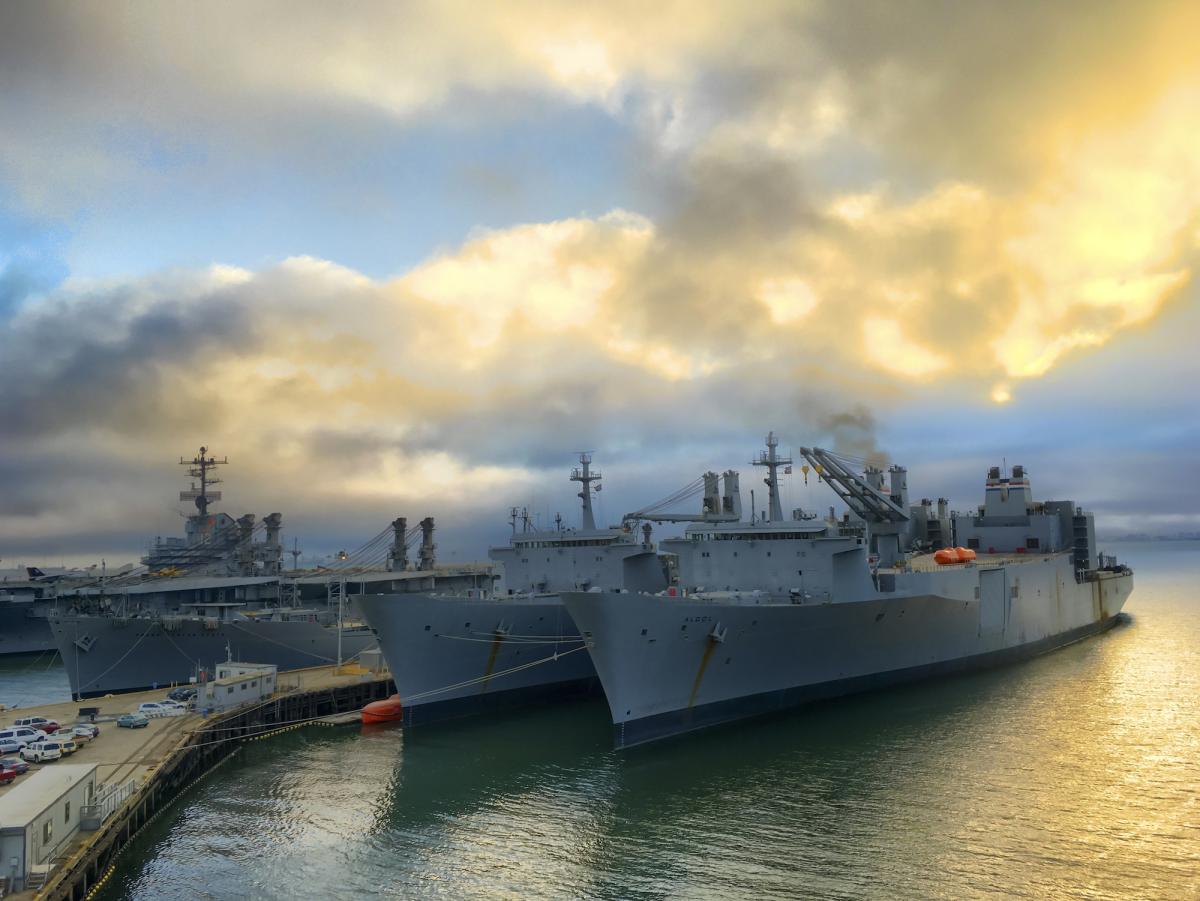Recently, I organized a letter from former Maritime Administration (MarAd) political appointees to House and Senate appropriators asking them to recapitalize the nation’s sealift fleet—the ships designated to support the rapid worldwide deployment of soldiers and Marines. The rust-bucket Cold War-era ships that comprise the fleet have degraded significantly, posing a threat to deployed military personnel and to U.S. national security.
The Maritime Administration manages the Ready Reserve Fleet (RRF), 50 percent of the government-owned surge sealift capability. It comprises 46 vessels: 35 roll-on/roll off (RO/RO) vessels, including 8 fast sealift support (FSS) vessels; 2 heavy-lift or barge-carrying ships; 6 auxiliary craneships; 1 tanker; and 2 aviation repair vessels. They are berthed in a variety of locations to minimize sailing times to strategic locations: Tacoma, Suisun Bay, Alameda, Oakland, Long Beach, San Diego, Beaumont, Marrero, New Orleans, Charleston, Norfolk, Portsmouth, Newport News, Baltimore, and Philadelphia. The vessels are supposed to be able to be made fully operational within their assigned 5 or 10 day readiness status.
The RRF includes the SS Cape May, launched in February 1972, the year President Nixon visited China and All In the Family entertained millions of TV watchers. The SS Altair is slightly younger, built in 1973—the year George Steinbrenner bought the Yankees and the war in Vietnam was winding down.
Last fall, the U.S. Transportation Command ordered a turbo-activation of the Maritime Administration and Military Sealift Command sealift fleet. The purpose was “to objectively evaluate the ability of Organic Surge Fleet vessels, at a fleet-wide level, to transition from Reduced Operating Status (ROS) to Full Operating Status (FOS) within 120 hours; and . . . to assess the vessels’ performance, DoD policies, MSC and MarAd processes, and surge sealift infrastructure factors that contribute to Organic Surge Fleet output under wartime conditions.” Of the 61 vessels that participated in the September 2019 exercise, only 39 were ready for tasking, and 32 got underway. Troubling findings from the activation were released in December 2019, including that the “Organic Surge Fleet is challenged to be immediately available for a large-scale inter-theater force deployment without delays/impacts to force closure due to degraded readiness.”
Three weeks later, soldiers assigned to the 82nd Airborne Division at Fort Bragg, North Carolina, executed a short notice deployment to the Middle East. They were wheels up within 18 hours of receiving orders. They brought what they could carry on the plane, with heavier supplies and military equipment to follow.
However, the Army cannot make the assumption that military equipment (tanks, trucks, and jeeps) will automatically follow anywhere on the globe. Per the December 2019 report, the ready-for-tasking rate of the 50 Roll-On/Roll-Off (RO/RO) vessels assigned to the Organic Surge Fleet (35 MarAd, 15 MSC) during the September 2019 exercise was 63.9 percent. That means 36 percent of Army equipment would have been stuck in limbo in a real crisis.
According to DefenseNews, the Army sent a letter to the House Armed Services Committee in November 2018 stating, “Without proactive recapitalization of the Organic Surge Sealift Fleet, the Army will face unacceptable risk in force projection capability beginning in 2024.” The situation had not changed in 2019 when TransCom initiated the turbo activation.
TransCom and MarAd have repeatedly warned of the impending problem. Then-TransCom commander General Darren McDew told the Senate Armed Services Committee in April 2018 that “our organic sealift capabilities will degrade rapidly over the coming years.” The MarAd Administrator Mark Buzby shared concerns about the program at a March 2019 House Armed Services Committee hearing. Concerns stretch back at least as far as 2009 when I served as the MarAd Chief Counsel.
Funding never appeared because there was always something more important. I am a former Coast Guard officer, Navy wife, and Army brat who grew up in Fayetteville, North Carolina. My father and my friend’s parents constantly deployed—Grenada, Haiti, Panama, the first and second Persian Gulf wars. As kids we were told that our parents would be safe, that they had the best military equipment in the world. The same statement cannot be made today. A 63.9 percent transport rate is a failing grade, one that places soldiers and Marines at risk.
The Department of Defense tried to solve the problem by submitting a budget request to the Office of Management and Budget (OMB) to build new sealift ships, but OMB claimed the DoD’s plan is too expensive. No, it is not. OMB is placing American lives in danger and foreclosing on job opportunities. The DoD plan was to build the new ships in the United States. What does OMB want DoD to do? Build the ships overseas?
Today, I am a locally elected official who supports business growth in my district. I do so because the additional salaries generate spending and taxes. Why does OMB not want to do that in Mississippi, Maine, California, Pennsylvania, Alabama, or Washington? What is the downside to employing Americans to build ships that will transport U.S. military goods and supplies?
There is no downside. OMB is simply punting the issue, but they will not be the people without tanks and munitions during the next theater-wide conflict. They will be safe at home while soldiers and Marines struggle to understand why their gear is stuck on rusty ships stuck in U.S. ports.
Congress needs to act. Our service members cannot be told to rely on severely degraded 48-year-old ships to transport vital military supplies in a timely manner during times of intense conflict.



